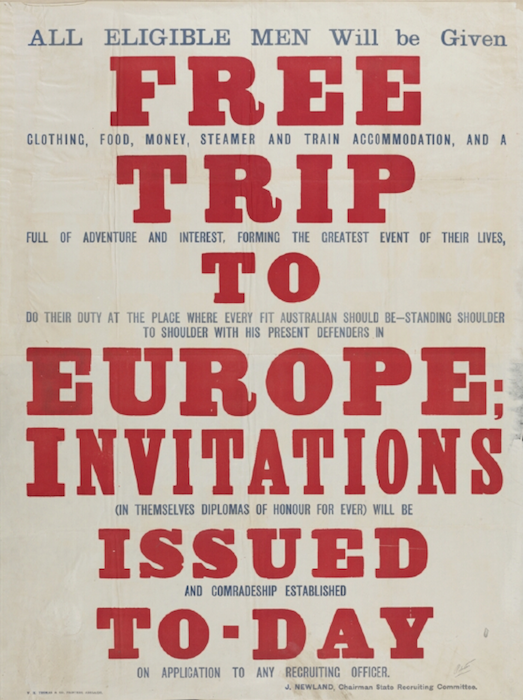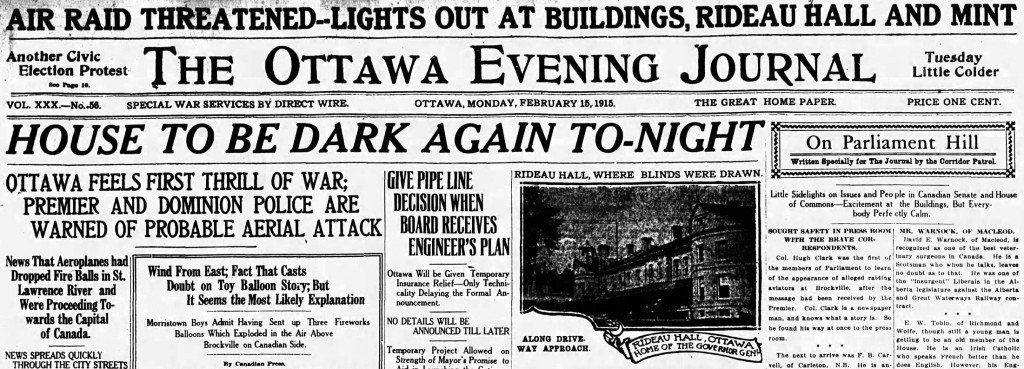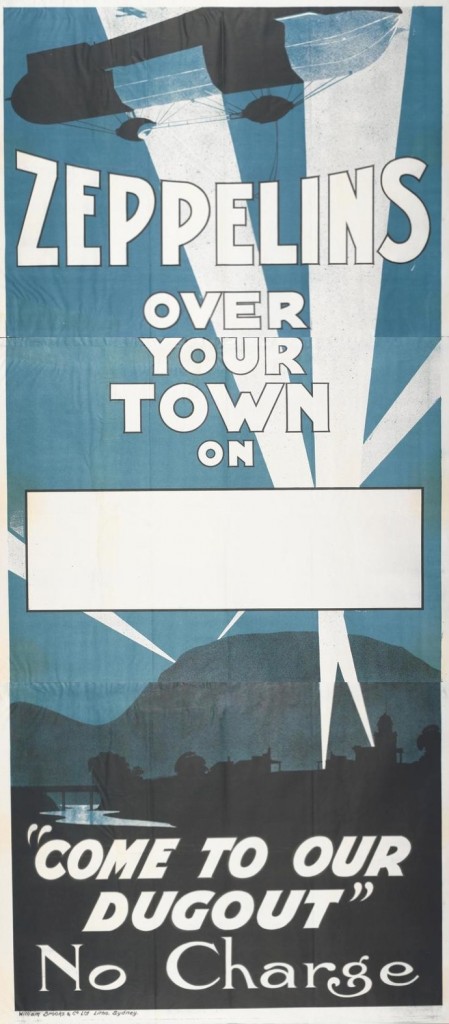The fine print
FREE TRIP TO EUROPE; INVITATIONS ISSUED TO-DAY or ALL ELIGIBLE MEN Will be Given FREE CLOTHING, FOOD, MONEY, STEAMER AND TRAIN ACCOMMODATION, AND A TRIP FULL OF ADVENTURE AND INTEREST, FORMING THE GREATEST EVENT OF THEIR LIVES, TO DO THEIR DUTY AT THE PLACE WHERE EVERY FIT AUSTRALIAN SHOULD BE — STANDING SHOULDER TO SHOULDER […]





